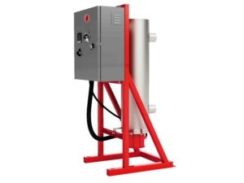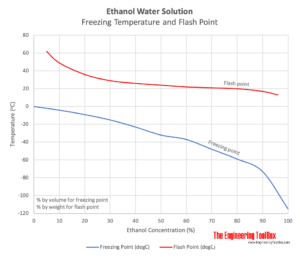Inline Heaters for Clean Water Heating
Last updated on April 23rd, 2025 at 03:43 am
Clean water is that which is safe for human use and/or consumption. Of course, this is important for the food and beverage industry and domestic use, such as clean drinking water. It is also a necessity for many industrial applications.
Heating clean water has its own challenges. The heater needs to provide heat without adding contaminants and must meet precise temperature requirements. To this end, electric inline heaters are ideal for clean water application.
Electric heaters make excellent clean water heaters due to their precision and efficiency. Inline heaters are the ideal option because they provide indirect heat. They heat a fluid that circulates through the heater and parallel to the target medium. This allows for consistent and accurate temperature. 
Because this type of water heater does not have the heater in direct contact with the water, it prevents potential contamination. In contrast, immersion heaters can foul the water as a result of the same direct heating method that makes them so efficient. This makes inline heaters ideal for clean water applications.
Industrial Applications of Clean Water Heating
Industrial Washing
Generally, industrial washing applications require significant power output. The water needs to be clean and have a high enough temperature to provide adequate cleaning. Industrial washers are frequently used for cleaning uniforms which may have tough stains from oil and other contaminants.
These systems remove metal fillings, particulate, and other debris in parts washing applications. Thus preventing damage, contamination, and other issues from occurring in the use of washed parts.
The food industry uses inline heaters in industrial washing processes that keep products safe for human use and consumption. For example, ensuring bottles are safe and clean before filling them with soda or other products.
Industrial Cleaning
Where the results of industrial washing are generally consumer or human facing, industrial cleaning focuses more on facilities. However, both have important considerations for human and environmental safety.
Industrial cleaning keeps facilities clean and in good working order. But it also serves to remove hazardous spills and other risk factors. Careful temperature and water quality maintenance are necessary to mitigate these hazards.
Freeze Protection
Freeze protection is necessary for applications in, or exposed to, cold environments. Freezing can slow or stop processes, cause damage to products, or even cause equipment failure. Preventing liquid from freezing typically involves using electric heaters and may apply chemical solutions.
If the water is not clean, debris and contaminants can make freeze prevention calculations inaccurate. Parts of the water may freeze at different rates and temperatures. As well, this reduces accuracy when calculating the chemical solution.

Fig 1: Engineering Toolbox
Fig. 1 represents a calculation determining the amount of ethanol for a freeze protection solution with clean water. Ensuring the water is clean keeps computations accurate, reducing the risk of freezing or ignition.
Heater Materials
Minimizing potential contaminants is extremely important for clean water heaters. As such, inline heater materials and components require careful selection for their specific application.
Sheath & Flange
Heater sheath and flange materials are always relevant considerations. The selection process must consider the corrosiveness of the target medium, the operating temperature, and the heated medium’s end-use.
In freeze protection, for instance, a copper sheath and steel flange are generally sufficient. This can prevent corrosion damage and withstand the necessary temperatures without decay. The copper sheath and steel flange combination is usually sufficient for steam generation for washing and cleaning as well. However, the requirement can change if pure steam is necessary.
For food washing applications, further protection may be necessary. A common approach is an Incoloy sheath and stainless steel flange.
Pump
A pump is always necessary for an inline heater. It’s responsible for the transport of the fluid inside the heater system. In combination with the heat, this ensures effective flow rates.
Drain Valve
A drain valve should be installed in any inline heater system. This allows for the easy release of fluids to relieve blockages, manage flow, and increase ease of maintenance. This is important for maintenance processes like high-velocity flushing in circulation heaters.
Inline Clean Water Heater Quotes
Wattco custom manufactures clean water heaters for industrial applications. Our team of engineers carefully selects and configures our electric inline heaters to manage each project’s flow rate, mounting, and watt/area requirements.
Contact Wattco today for electric inline heater quotes and information.
